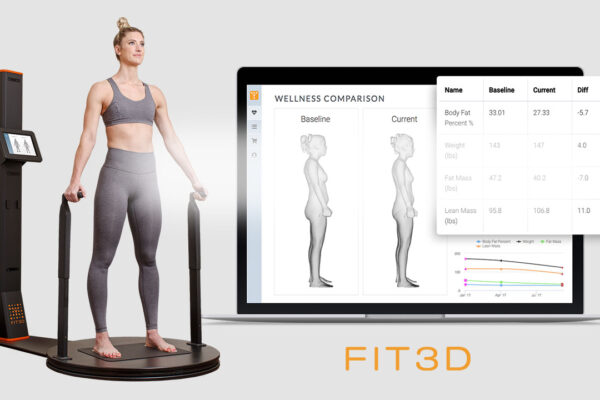8 expert tips to help make counting macros simple.
Counting macros. Flexible dieting. If it fits your macros (IIFYM). You may have heard this balanced approach to nutrition by a variety of names but no matter what you call it, macro counting is a popular – and there’s a reason why! Macro based nutrition allows anyone to create a nutrition plan that fits their goals, lifestyle, and activity. Not only that, but a macro-based plan lets you choose any foods you like if they fit within your plan. Don’t like salad? No problem! Get your carbs from other vegetables. Prefer steak over chicken? That works, too, if you eat your planned amount of protein for the day. You can even have your favorite indulgences on occasion too if most of your food choices come from high quality, nutrient dense foods.
Think of flexible dieting or macro counting as managing a budget for your nutrition. In your personal finances, you must spread your monthly income across different expense categories. For example, you may need to plan how much money you’ll spend on utilities, your home, and groceries. You track your spending to make sure that you have enough to satisfy all your obligations without overspending. In a similar way, you’ll learn to spread your daily calorie target across the three macronutrients: protein, fat, and carbohydrate. You’ll track your intake of each macro to make sure that you meet your body’s energy needs without overeating.
If you’re new to flexible dieting, then you may be wondering how to get started. First, if you’re still trying to understand what a macronutrient is, then take a look at one of our earliest blog posts, Nutrition Basics 101. Once you have the basic idea, use our FREE macro calculator to create your own personalized nutrition plan – or schedule an appointment to let our nutritionist do it for you. Your nutrition plan serves as your nutritional budget, to use our earlier analogy. Once you’re ready to start counting, follow these eight tried and true tips for macro counting success!
- Use an app to track your calories and macros!
You can use any app that allows you to enter and track the food you eat and its nutrition information, but we recommend My Fitness Pal (MFP). We like it because it has the largest database of foods available, a website, and mobile apps for iOS and Android. It also has other features to simplify your tracking, like remembering the foods you’ve tracked, copying previous meals, sharing nutrition information with a friend, and a recipe builder for calculating the nutrition information about your favorite recipes! You can also add friends on MFP for extra accountability and encouragement or, if you’re enrolled in the Live Lean Rx Nutrition Coaching Membership, you can add your Nutritionist for quick and easy food log reviews.Our Nutritionist’s Advice: Try tracking your food in advance, like the evening before or early in the day. Tracking your food ahead of time helps you plan your food mindfully, reduces the chance that you’ll forget to track, and it helps you make smarter decisions when your plans change because you’ll already understand what your macro budget looks like. - Download the Macro Cheat Sheet.
If you don’t know what foods are made of which macros, download the Live Lean Rx Macro Cheat Sheet to help you out by right-clicking (on a desktop) or long pressing (on a mobile device) to save the Cheat Sheet image to a location you can access anytime. The cheat sheet gives you a fast list of foods high in proteins, fats, and carbohydrates plus foods high in both carbs and protein and foods high in both fats and proteins. This can help give you ideas about how different foods fit into your meal planning or help you select quick additions to your meals and snacks that fit within your macro budget.Our Nutritionist’s Advice: Don’t be afraid of trial and error! In the beginning, you’ll spend a lot of time learning more about the macro make up of your favorite foods. Experiment with how different foods and portion sizes work together to fit within your nutrition plan. If you find your choices don’t fit well with your plan, then look for substitutions that will better support your goals. For example, if you’re finding your fat is higher than planned, try replacing your scrambled eggs with egg whites and your cooking oil with cooking spray for lower calories without losing flavor or satisfaction. - Use a scale.
It’s really hard to count calories or macros if you don’t know the quantity of food you’re eating. The smartest way to measure your food is with a food scale. They’re inexpensive and simple to use – we like this one (affliate). The most precise way to measure your food is to measure it raw in grams, but let’s be honest – that can be a lot of work for a level of precision that may not be necessary to help you reach your goals. It’s okay to measure in ounces and it’s okay to measure your food after it’s been prepared. What’s most important is to measure your food consistently. If you weigh your food raw, always measure it raw. If you weigh it prepared, always weigh it prepared. Consistency allows you to understand how your choices effect your progress.Our Nutritionist’s Advice: You may be tempted to estimate your portion sizes. If you’re eating a handful of sliced bell pepper or a fistful of blueberries then this is probably fine, but what about almonds and olive oil? It’s really easy overestimate a portion size when we eyeball things like fats and snacks. Always measure these items to avoid overeating calories. - Don’t take your scale everywhere you go.
This may sound like a strange suggestion, but there are people who take the extreme route and only eat food that has been precisely measured and tediously logged. Food is fuel – but it’s also social, it’s family time, it’s celebrations. As a rule, measure your food when you’re eating at home but if you find yourself dining out or enjoying a meal in someone else’s home, then don’t worry about the scale. Instead, use your hands to estimate portion sizes when you log your foods. A portion of protein about the size of your palm is 3-4 oz. (or about 100 grams) depending on the size of your hand (a portion the size of a deck of cards is about 3 oz.). A closed fist is about a 1 cup serving size of veggies. An un-mounded, cupped handful of carbohydrates (like rice or fruit) is about a ½ cup serving size of fruit, starches, or grains. And finally, your thumb is about the size of a serving of fat, like 30 grams of nuts, an oz of avocado, or a tablespoon of butter.Our Nutritionist’s Advice: When dining out, visit the restaurant’s website to view the menu ahead of time and make your selections before you even walk through the door. Choosing your options before you’re seated and surrounded by the sights and smells of great food will help you confidently order options that support your goals without leaving you feeling deprived. If you plan to eat in someone else’s home, ask what’s being served and offer to bring a dish. This makes a great opportunity to make sure there is at least one option that will support your nutrition goals. - Meal Prep!
Meal prep is all the buzz right now. Why? Because it simplifies nutrition and sets you up for success. Knowing you have healthy prepared meals at your fingertips reduces the temptation of stopping for takeout at the end of a long day. It’s actually quicker to eat the meal you already prepared than it is to wait in the drive through! Meal prepping also makes tracking your macros simpler. Whether you rotate 2-3 meals throughout the week or choose to eat the same meal all week, you’ll only need to figure out the portion sizes and nutrition info once. You’ll just reuse that information for as long as you eat what you prepared. If you’re cost conscious then you’ll like that meal prepping allows you to buy sale items in bulk and make them last. Don’t forget your snacks. Pep snacks ahead of time by washing and slicing fruits and veggies, boiling eggs, or proportioning foods like nuts and seeds.Our Nutritionist’s Advice: If getting enough veggies in your diet is a challenge, then consider frozen vegetables. Most vegetables can be purchased frozen and steamed in the bag in a matter of minutes. You can cook them in advance and store them in the refrigerator or cook just enough for one day or meal. - Try new foods.
Once you get the hang of counting macros, you’ll find the combinations of enjoyable foods that bring you results. This is when flexible dieting starts getting easier! Don’t get too comfortable with the same old foods, though. Look for opportunities to introduce new foods! Including a variety of foods helps keep boredom away and gives your body the variety of vitamins, minerals, amino acids, and other necessary nutrients.Our Nutritionist’s Advice: Variety doesn’t have to come only from food choices. You can also introduce variety by trying new cooking methods! If you like mashed potatoes (loaded with cream and butter) then try roasted potatoes tossed in a small bit of oil and rosemary. Try replacing your fried eggs with poached eggs. Having a variety of cooking methods available keeps your food interesting and offers lower calorie options. - Let go of preconceived ideas.
Sometimes we develop ideas of what foods we should or shouldn’t eat and when we should or shouldn’t eat them. Let that go! Chicken and fish aren’t breakfast foods, right? But there’s no reason you can’t include them in your morning meal to hit your protein goals. Try cold meatballs for a pre-workout snack. Make a veggie-loaded omelet for dinner! Don’t be afraid to eat what works for you when it works for you! Be open to any food that can help you reach your goal.Our Nutritionist’s Advice: Eating whole food doesn’t mean you can’t still have plenty of snack foods available. Rotisserie chicken, pre-boiled eggs, individually wrapped cheeses, and single serving packages of fruits, vegetables, and nuts all make easy snack options at any time of day. - Focus on progress, not perfection.
One of the downfalls of counting calories and macros is that it can be easy to lose sight of the goals and focus more on the numbers. When that happens, food becomes more about data and less about supporting a healthy body and lifestyle. Most days you won’t eat exactly the recommended number of grams of each macro. Some days you’ll eat a few extra grams of carbs or you’ll struggle to eat all the suggested protein. That’s okay! Remember the goal you set and the reason you started counting. Practice mindful eating instead of distracted snacking. Focus on high quality food choices instead of processed foods high in empty calories. Don’t use your macro budget as a set of rules you have to follow every day. Instead, use flexible dieting as a tool that helps you build an increasingly healthy lifestyle that you can sustain even after you smash your goal.Our Nutritionist’s Advice: When first beginning, focus on eating your full protein budget every day. Protein helps support your muscle (an important part of your metabolism!) and helps you feel satisfied for longer. Most people eat less protein than is ideal, so learning to incorporate more protein into each day is a great place to start.





Recent Comments